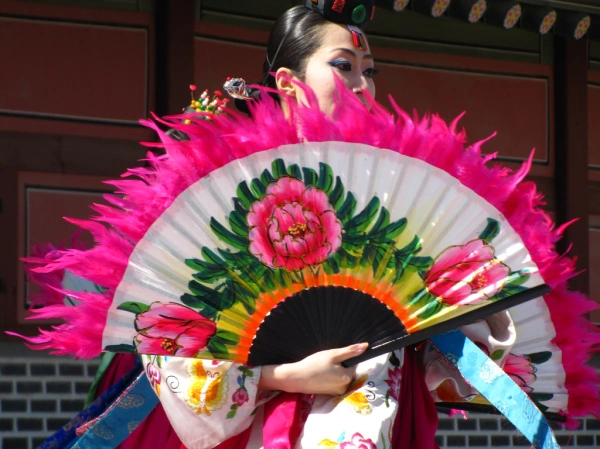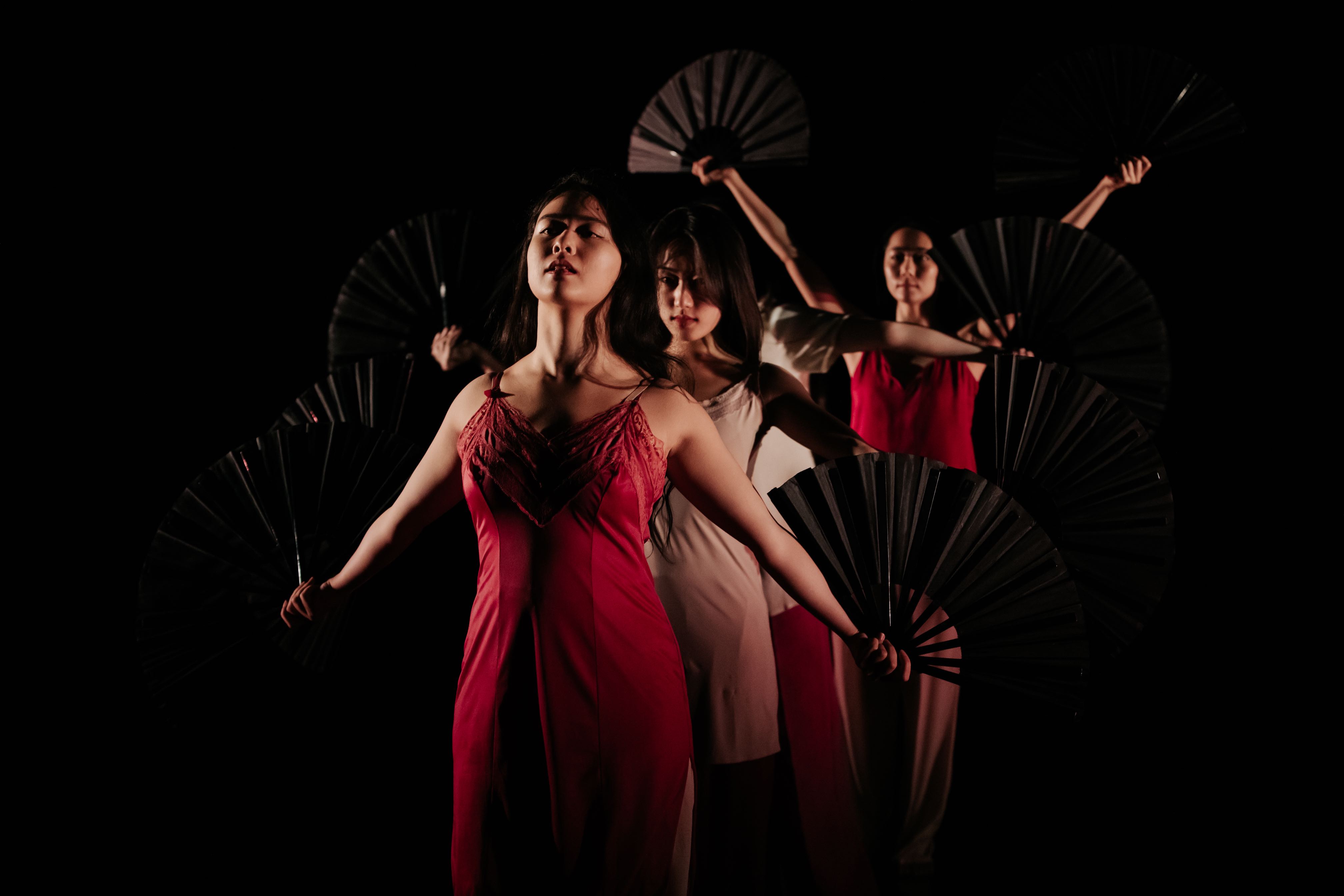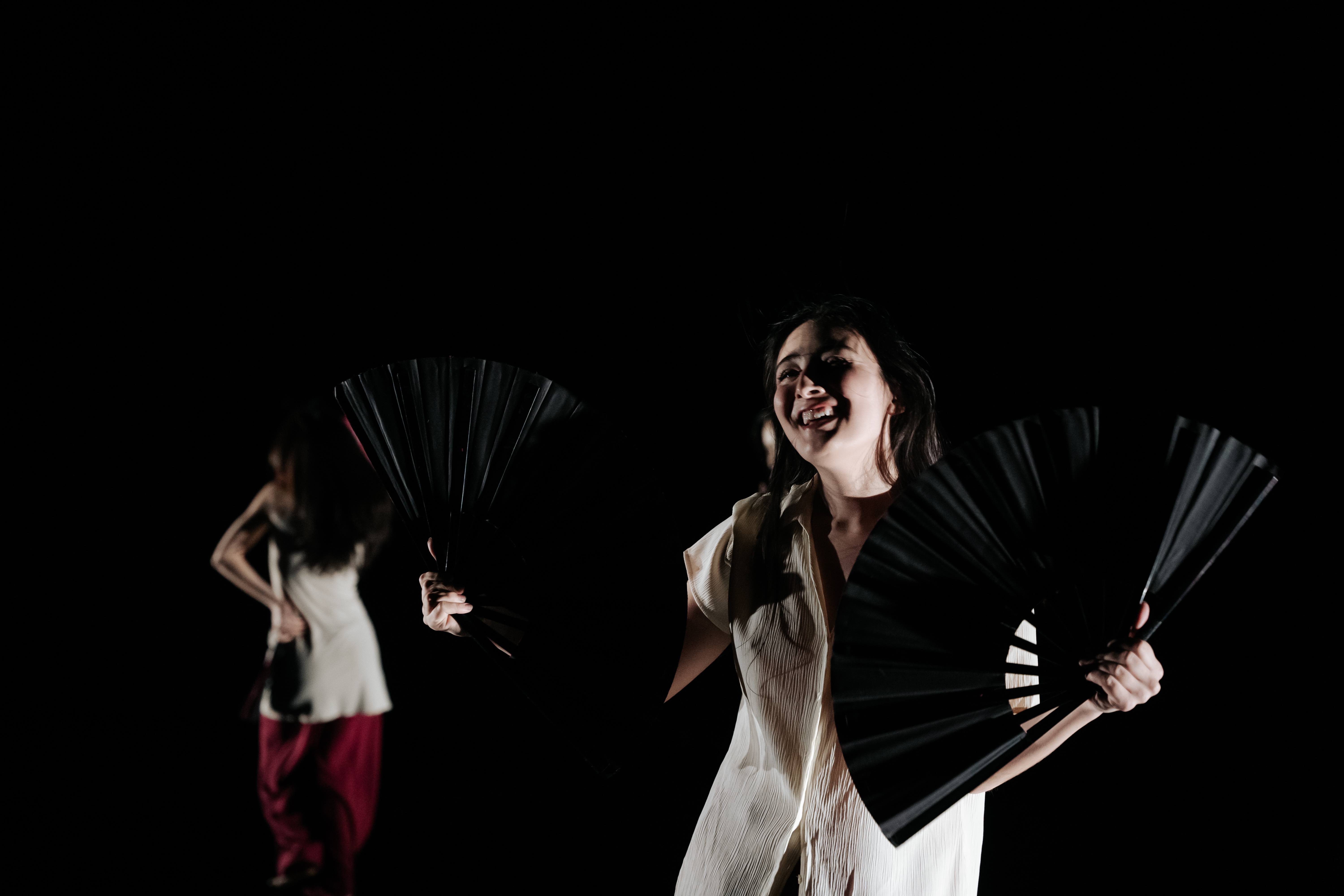Because folklore is a cultural tradition, I wanted to reference tradition within movement as well. There is a Korean folk dance called buchaechum, or the “fan dance,” which began in South Korea in 1954, originated by Kim Baek-Bong, who first believed the dance should be a solo until she began setting it on groups. Kim drew on shamanistic culture where the fans are used as tools to extort evil spirits, and more traditional fan dances performed for the royal court during the Joseon Dynasty.1 Buchaechum is almost only performed by young women dressed in classic hanbok garments.
Each woman carries two large fans – decorated in flowers of bright colors (often pinks and greens) and adorned at the top with feathers. With these fans, beautiful images are created with smooth and swift circular movement. One of the most striking images is a serpent-like wave created by each dancer placing the two fans out in front of her as she moves them one at a time, which travels down the line in a canon. There are always choreographed moments of open faced circles which showcase the awe of the fans. These fans are light and fragile, and the movement echoes them in delicacy and care. Buchaechum displays loveliness, femininity, and group cohesiveness. While it rarely exhibits individualism and aggression, there is power behind the women performing.
In a way to break from tradition, I transformed the beautiful movement of classical buchaechum into abrupt, sharp movements, using the fan in more aggressive ways. I added words and gossip interspersed into the ethereal nature of traditional Buchaechum, challenging our ideas of group thought and individualism – do we usually agree with others who are like us, or do we question those around us?


R: Photo of Yingyi Pan by Rocio Chacon rociochacon.com


R: Image from Korean Cultural Center New York

Image from Arts of Body Motion 
While there is always a variety of costumes and colors depending on what is popular fashion at the time, pink is always used, either on the hanbok or the fans (and usually both). There isn’t specific reasoning behind this, other than the fact pink is usually attributed to femininity. The vibrancy of the color on the fans stands out, and I like to think of it as a reclamation of the power of pink — a color that has often times been used to signify something as “girly” or “weak”.


Traditional buchaechum fans are beautifully decorated on both sides. Because I wanted to show a stray from tradition, I only painted one side of each fan, leaving the backs black. Originally, I had thought to write words I used in the piece on the black sides, like “tease” and “bitch”, but I decided on just leaving them blank. The black is a stark difference from the pink with white flowers, and we don’t show these sides until the phrase “soul sucker” is said. This is the first time in the piece that the gossip begins to turn ugly and distasteful so we visually show the darkness in our props.
- Kumal Tomar, “BUCHAECHUM DANCE – KOREA: The Fan Dance,” 2017, https://danceask.net/buchaechum-dance-korea/.